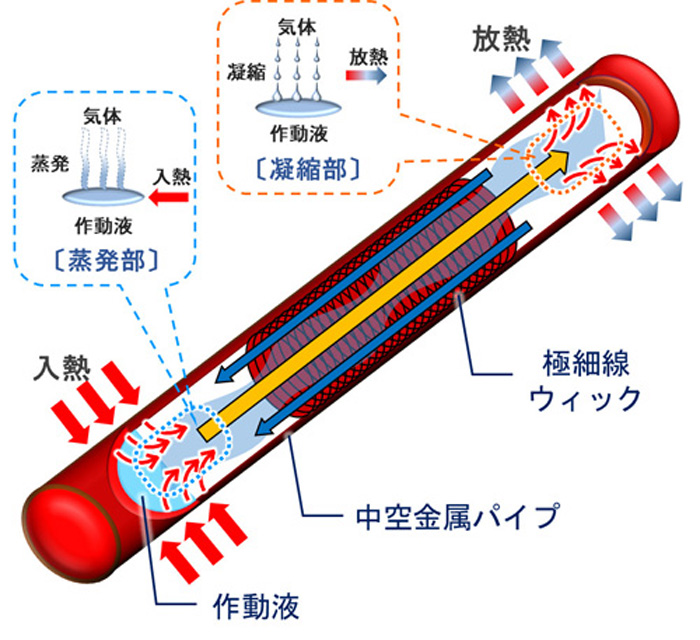Press Releases
Development of high-performance heat pipes for cooling data center
October 26, 2022
Fujikura Ltd.
Fujikura Ltd. (Director, President and CEO Okada Naoki) has developed a heat pipe for cooling data center that has approximately doubled the maximum heat transport capacity compared to previous products and is compatible with the increased heat generation of server CPUs.
In data center, server CPUs are becoming more and more powerful as high-speed communications become more common due to the spread of 5G and AI. The more powerful a CPU is, the more heat it generates, and so high-performance cooling is required to fully utilize its capabilities. High-performance liquid cooling systems are an effective solution, but the equipment costs are high, so there is a demand for even higher performance than conventional inexpensive air-cooling systems that use heat pipes.
In a heat pipe, the working liquid enclosed inside repeatedly changes between gas and liquid through heating and cooling while circulating inside and transferring heat. To further improve performance, the internal capillary structure for circulating the working liquid of the heat pipe was improved. As a result, the pipe with an outer diameter of 8 mm was compressed to a thickness of 4 mm, and even with the reduced thickness, the target limit heat transport capacity was significantly improved from the previous 55 W to 100 W per heat pipe.
We will continue to meet customer expectations by improving the performance of our cooling modules and contributing to the further development of information and communications infrastructure.
|
Image sample of heat pipe module for data center cooling |
[Terminology explanation]
Heat pipe
A structure with capillary forces called a wick is installed inside a hollow metal pipe, which seals in the working fluid and creates a sealed structure.
When one end of a heat pipe is heated, the working fluid in the heated section evaporates and travels as a vapor stream to the cooler side at the other end.
The cooled vapor on the low temperature side condenses into liquid.
The condensed liquid is drawn back to the heated side by the capillary force of the wick and evaporates again.
This cycle is repeated, and heat is transported efficiently through the phase change of the working liquid, which occurs when the working liquid evaporates and condenses.
|
How heat pipes work |




